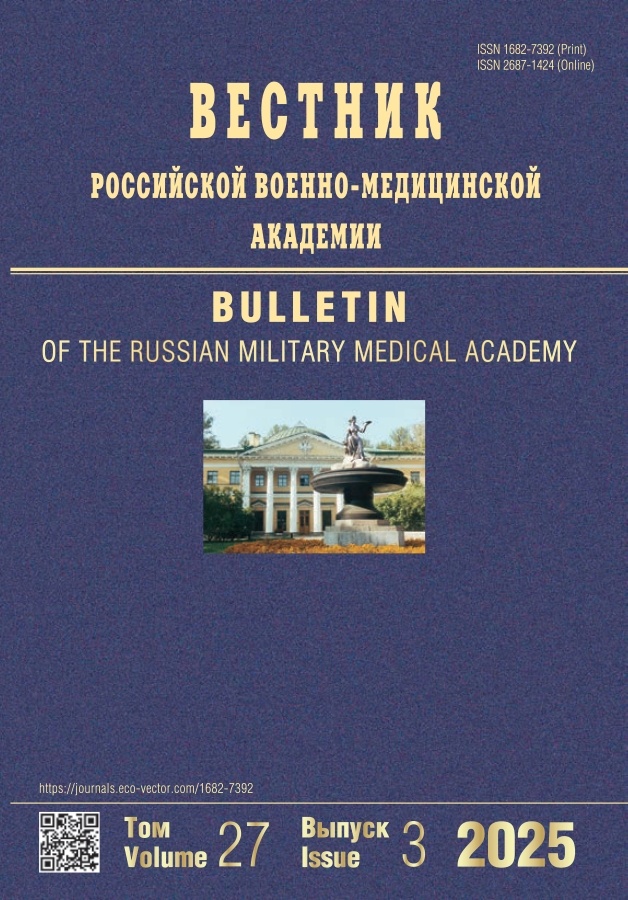Paraspinal structures of thermoregulation
- 作者: Gaivoronskiy I.V.1,2, Rodionov A.A.2, Gaivoronskiy A.I.1,2, Gaivoronskaya M.G.2,3, Nichiporuk G.I.1,2, Goryacheva I.A.1,2, Khabibullina N.K.2,3
-
隶属关系:
- Military Medical Academy. S. M. Kirov
- Saint Petersburg State University
- Almazov National Medical Research Centre
- 期: 卷 22, 编号 2 (2020)
- 页面: 241-245
- 栏目: Articles
- URL: https://journals.rcsi.science/1682-7392/article/view/50080
- DOI: https://doi.org/10.17816/brmma50080
- ID: 50080
如何引用文章
全文:
详细
A detailed analysis of the literature on the structure and functions of the paraspinal structures of human thermoregulation involved in maintaining temperature homeostasis is presented. It is shown that in the process of evolution, a peculiar paraspinal morphofunctional complex is formed around the spinal center of thermoregulation, including thermal- generating structures (adipose and muscle tissue); venous thermal distribution rings formed by paraspinal venous plexuses and thermoregulatory nervous apparatus (meningeal and posterior branches of the spinal nerves and their nerve endings). It was found that the heat-generating structures are represented by adipose tissue of the epidural space, adipose tissue of the bone marrow, paravertebral and interscapular adipose tissue, back muscles and intercostal muscles). Bone marrow fatty tissue plays an important role not only in thermoregulation, but also in bone remodeling. Fatty tissue mainly includes components of white and a small amount of brown adipose tissue. Heat from muscles through the venous system of the spinal column affects the functioning of the spinal center of thermoregulation by contractile thermogenesis. It has been shown that around the center of thermoregulation of the spinal cord, venous vessels form four thermal distribution rings. The first of them is the venous bed of the soft membrane of the spinal cord and cerebrospinal fluid of the subarachnoid space; the second is the internal vertebral venous plexus; the third - intraosseous (intraorgan) venous plexuses of the vertebrae; the fourth is the anterior and posterior external vertebral venous plexuses. All four thermal distribution venous rings anastomose among themselves, forming a single thermal distribution system around the spinal center of thermoregulation. The innervation of thermal generating structures and thermal distribution of venous rings is carried out by somatic and autonomic nerve fibers.
作者简介
I. Gaivoronskiy
Military Medical Academy. S. M. Kirov; Saint Petersburg State University
编辑信件的主要联系方式.
Email: vmeda-nio@mil.ru
俄罗斯联邦, Saint Petersburg; Saint Petersburg
A. Rodionov
Saint Petersburg State University
Email: vmeda-nio@mil.ru
俄罗斯联邦, Saint Petersburg
A. Gaivoronskiy
Military Medical Academy. S. M. Kirov; Saint Petersburg State University
Email: vmeda-nio@mil.ru
俄罗斯联邦, Saint Petersburg; Saint Petersburg
M. Gaivoronskaya
Saint Petersburg State University; Almazov National Medical Research Centre
Email: vmeda-nio@mil.ru
俄罗斯联邦, Saint Petersburg; Saint Petersburg
G. Nichiporuk
Military Medical Academy. S. M. Kirov; Saint Petersburg State University
Email: vmeda-nio@mil.ru
俄罗斯联邦, Saint Petersburg; Saint Petersburg
I. Goryacheva
Military Medical Academy. S. M. Kirov; Saint Petersburg State University
Email: vmeda-nio@mil.ru
俄罗斯联邦, Saint Petersburg; Saint Petersburg
N. Khabibullina
Saint Petersburg State University; Almazov National Medical Research Centre
Email: vmeda-nio@mil.ru
俄罗斯联邦, Saint Petersburg; Saint Petersburg
参考
补充文件







